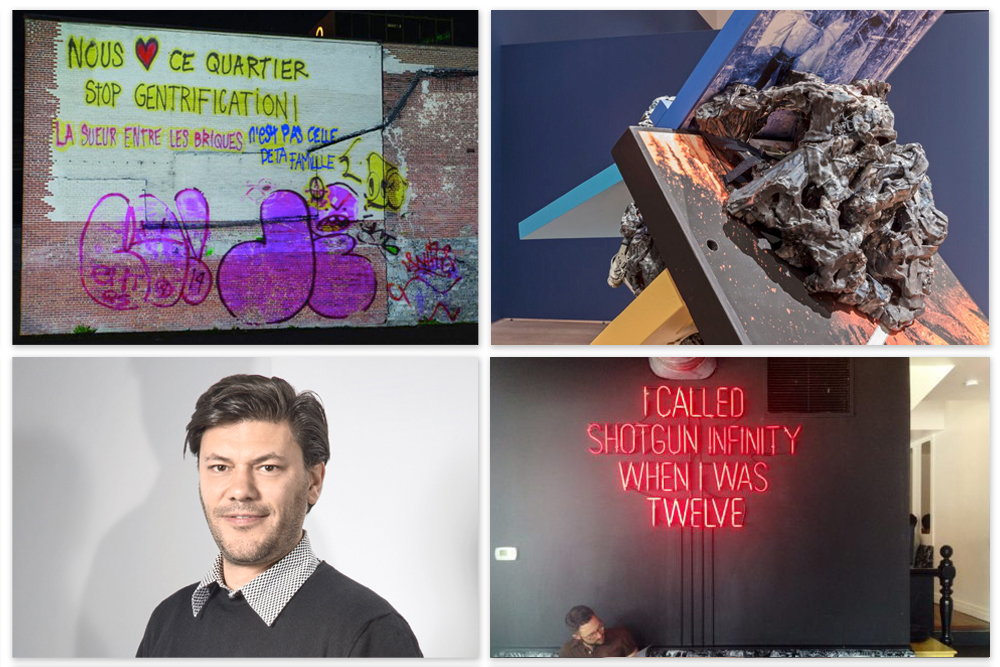Our editors’ weekly roundup of Canadian art news.
Artists and galleries have found another reason to hightail it out of Toronto’s Dundas Street West neighbourhood. Old School, a recently opened restaurant, is under fire for hanging alleged knock-offs of artworks by Toronto artist Kelly Mark and New York–based Daniel A. Bruce on its walls. Mark discovered the alleged copycat artwork on social media after she was tagged in an image of a text piece installed at the restaurant—its wording is identical to Mark’s neon work I Called Shotgun Infinity When I Was Twelve, which she made in 2006 and exhibited at Mercer Union. The Toronto Star’s Murray Whyte reached one of the owners of the restaurant, who rejects all accusations of plagiarism.
Veronika Horlik has been named winner of this year’s RBC Emerging Artist People’s Choice Award, which carries a cash prize of $10,000. The award “celebrates clay as a medium and introduces the public to new talent and trends in contemporary ceramics.” The competition’s exhibition at the Gardiner Museum displays Horlik’s winning installation alongside works by her fellow finalists, and is on view until August 30.
The Biennale de Montréal has appointed Philippe Pirotte as curator for its 2016 edition. Pirotte says, “At the moment, I am imagining the exhibition as a space that informs us about ourselves—uninvited. Simultaneously playful and fatalistic, it is a space where things can go awry.” Pirotte is director at Frankfurt’s Staatliche Hochschule für Bildende Künste Städelschule, and has been involved with renowned international organizations such as Frankfurt’s Portikus, Kunsthalle Bern, Amsterdam’s Rijksakademie for Visual Arts, the Berkeley Art Museum and Pacific Film Archive at the University of California, Berkeley, Paris’s Kadist Art Foundation and more.
Isabelle Hayeur is suing the Biennale de Montréal after her specifically commissioned projection work, Murs aveugles (Blind Walls), was removed from its site at the Saint-Laurent metro station without consultation with the artist. According to Hayeur, the owner of the building had agreed to the projections being screened on the wall for the duration of the event and “had never demanded a right to oversee the content of projections.”

 Clockwise from top left: Isabelle Hayeur sues the Biennale de Montréal for controversy surrounding the removal of her work, Murs aveugles, 2014. Veronika Horlik announced winner of the RBC Emerging Artist People's Choice Award for the work PROUNS (SLASH), 2015. Wall decoration at Old School restaurant in Toronto, which closely resembles Kelly Mark's I Called Shotgun Infinity When I Was Twelve, 2006. Philippe Pirotte announced curator of the 2016 Biennale de Montréal.
Clockwise from top left: Isabelle Hayeur sues the Biennale de Montréal for controversy surrounding the removal of her work, Murs aveugles, 2014. Veronika Horlik announced winner of the RBC Emerging Artist People's Choice Award for the work PROUNS (SLASH), 2015. Wall decoration at Old School restaurant in Toronto, which closely resembles Kelly Mark's I Called Shotgun Infinity When I Was Twelve, 2006. Philippe Pirotte announced curator of the 2016 Biennale de Montréal.







